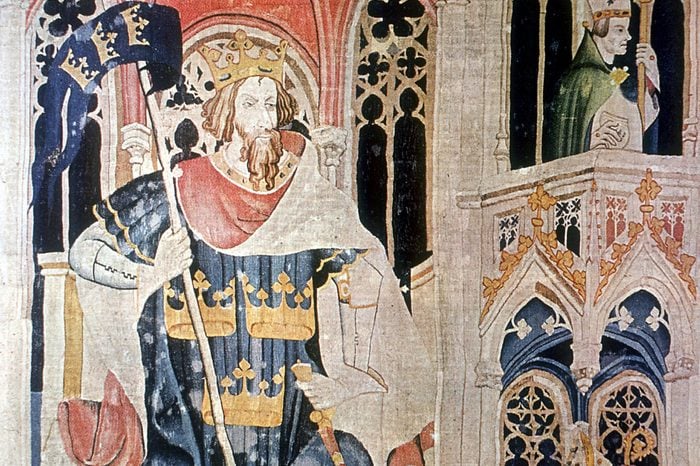
King Arthur
The best place for “happy-ever-after” feelings is the kingdom of Camelot, ruled by King Arthur, who leaned on the advice of the wizard Merlin to lead the Knights of the Round Table. Except he may be fictional: The tale was popularized in stories dating back to the 800s and it served as the inspiration for Alfred Tennyson’s epic poem. Scholars aren’t sure if these works are based on a real man or on folklore. The legendary King Arthur may have been based on a real warrior who led British armies during the fifth or sixth century. He also may have been the inspiration for historical writings about a warrior king, but no one can confirm whether those were about the mythic Arthur or if he even existed at all—but rest assured that these iconic characters were based on real people.

Pythagoras
Even if you can’t remember exactly what the Pythagorean Theorem is about (triangles!), you’ve probably heard of the famous math equation. It’s possible that the ancient Greek philosopher Pythagoras wasn’t even the first to come up with it—it may have been the Egyptians. If Pythagoras did exist, he didn’t leave any records that he himself wrote, and the accounts that do remain may have been written by his somewhat unreliable followers.
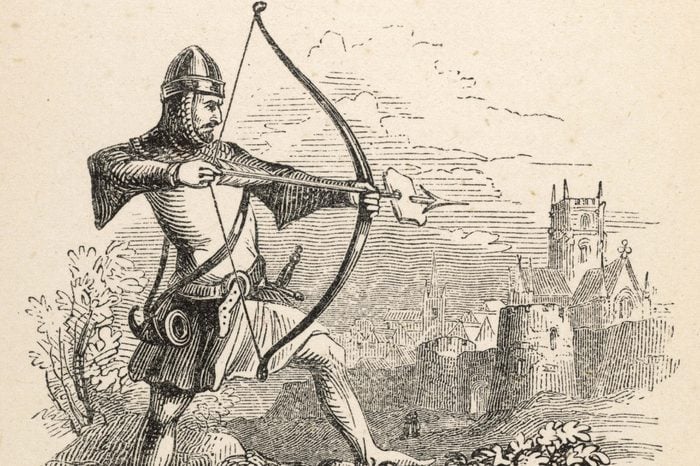
Robin Hood
Robin Hood is most famous for stealing from the rich to give to the poor, but the fair-minded outlaw might only exist as a fictional hero. Medieval scholars turned up records of criminals named “Robehod” and “Rabunhod,” but they’re not sure who they were or how they got their names. What they do know is that stories about outlaws who buck the system seem to have been popular throughout history. Everyone roots for Robin Hood! Do you know the answers to these history questions everyone gets wrong?

Sun Tzu
Sun Tzu is the author of the best-selling strategy guide The Art of War. The ancient book is believed to have been written in the fourth or fifth century, but no one knows for sure. And its age hasn’t stopped it from being consulted and employed by contemporary generals and CEOs. No one is sure if the Chinese military mastermind actually existed, or if the strategy classic was a compilation of Chinese wisdom gathered by many across time and then attributed to a single author.
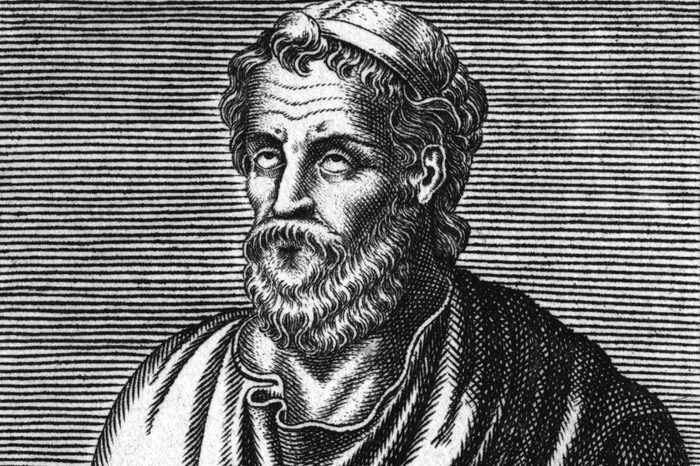
Homer
The famous poet, supposed writer of the iconic literary works the Odyssey and the Iliad, may not have existed at all, argue scholars. They believe Homer was created out of a cultural need for an author for these great Greek myths. The works were possibly written much earlier than scholars originally believed and compiled by many authors across time through oral traditions. Here are more history lessons your teacher lied to you about.
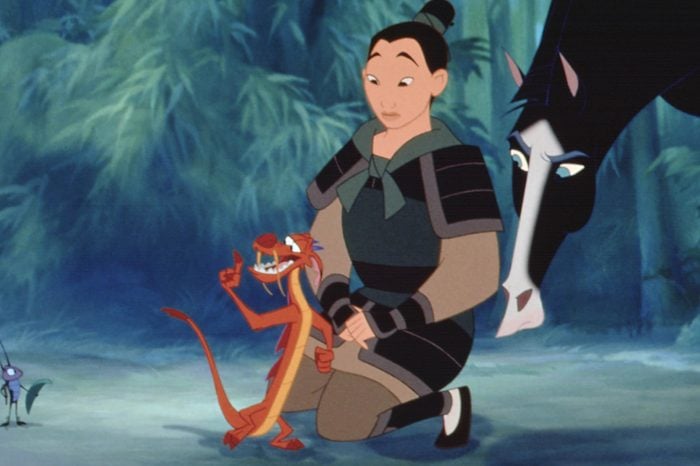
Mulan
Mulan is the iconic Chinese warrior that Disney animated. This inspiring young woman is a figure in a beloved Chinese folktale that dates back to the fifth century. There are multiple versions of the tale of a girl who takes her father’s place as a warrior because he’s too old to fight. She usually hides her identity and leads an army to victory. But most scholars agree that there’s no evidence such a woman existed, unlike these awesome historical women you never learned about in school.
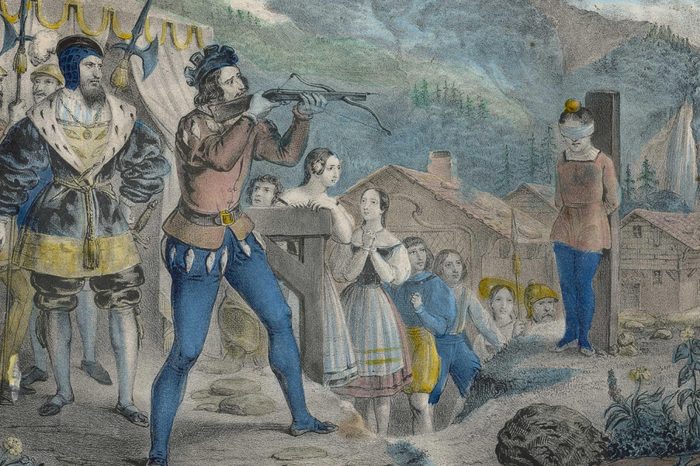
William Tell
William Tell is the famous Swiss archer who was forced to shoot an apple off his son’s head by a despot. Tell’s arrow didn’t miss, and the Swiss point to the heroic act as the start of Switzerland’s movement to become an independent nation. Although the event is supposed to have taken place in 1307 AD, researchers haven’t been able to find evidence that the story or the man are more than an inspiring myth.

Betty Crocker
You think of her as the classic kitchen goddess who knows everything about baking. Unfortunately, she’s not a real person. The company that became General Mills invented her to answer consumer queries. The surname Crocker came from a company director, and Betty was considered a “friendly sounding name.” Soon the persona became a reliable and beloved expert on cooking and recipes. Here are some food product icons who really are based on real people, though.

John Henry
The superhuman railroad man was a little too good to be true: The John Henry ballads sprang out of the post-Civil War era when the railroads were being built and America aimed to become a titan of industry. Henry was said to be a former slave who challenged a steam drill to a race—and won, only to die shortly after. The story highlights grit and determination, but evidence of a real John Henry is hard to find. He seems to be a composite of many stories featuring citizens who embodied the fearless spirit that America wanted to project like you can see in these 21 rarely seen photos that you won’t find in history books.
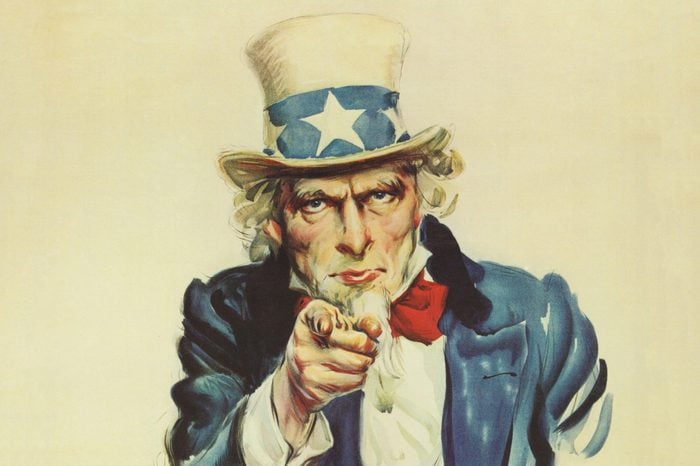
Uncle Sam
You know him as the top-hatted, patriotically dressed, gray-haired guy on the “I want you” recruiting posters. The figure was inspired by a real guy—a businessman who supplied army provisions and was nicknamed Uncle Sam. Soldiers during the war of 1812 would joke that their food came from “Uncle Sam,” but they weren’t referring to the distributor—more so to the actual army. The nickname usage spread, especially in newspapers, and Uncle Sam became the familiar popular figure by World War I. Next, learn about these famous historical moments that didn’t really happen.
